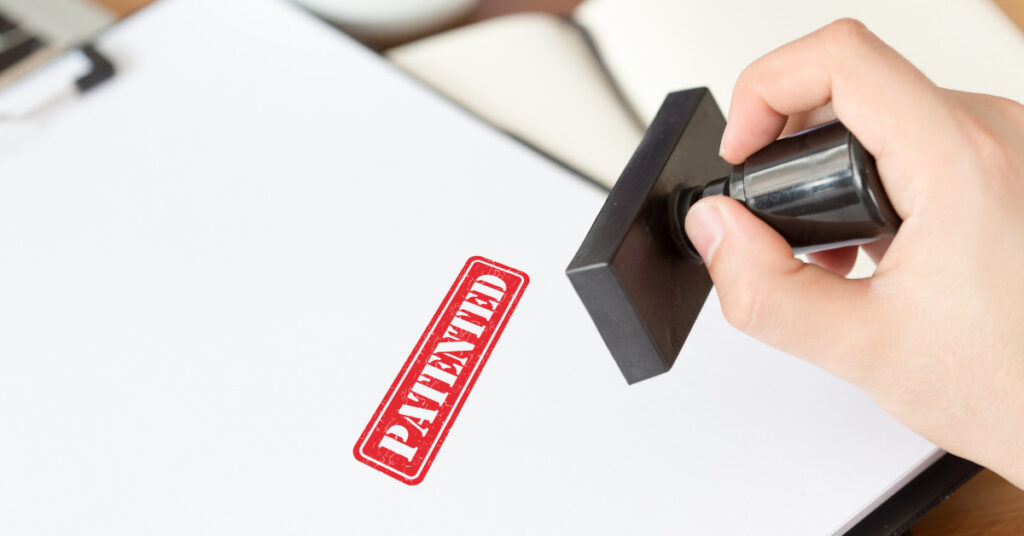What is a Patent?
A patent is a set of exclusive rights granted by a sovereign state to an inventor or their assignee for a limited period in exchange for the public disclosure of an invention. In return, inventors enjoy the right to prevent others from making, using, selling, or importing the invention for commercial purposes. There are 3 basic criteria of patentability which must be met to deserve a patent, Novelty, Non-obviousness, and last but not least industrial application.
This article will guide you about patents and what it means to get protective intellectual property protection. It will also cover some basic information such as how patents work, what is patent filing process and who can apply, but we’ll also go over some more advanced topics like international patent filing and negotiating with competitors on patent disputes.
United States Patents and the US Patent Office
Inventors, investors, businesses, and many others often obtain patent protection from the United States Patent and Trademark Office (USPTO). The USPTO is a part of the Department of Commerce. It offers three types of patents: utility patents, design patents, and plant patents.
Utility patents cover processes (methods), products (goods), compositions of matter, machines, or manufacturers. Design patents cover the ornamental designs or appearances of an article.
Plant patents cover new varieties of plants. These are only some examples; many other types of inventions can be patented, including methods for medical practice, industrial equipment design, and integrated circuit layout design.
For inventors, patents can provide several advantages. First, they may help the investor or business owner maintain their competitive edge in the marketplace. Patents allow inventors to prevent others from using their invention or copying it, potentially saving them millions of dollars in lost profits and royalties by competitors who would otherwise use their ideas to earn revenue.
As a result, patents are often used by businesses and entrepreneurs to protect valuable trade secrets and commercially sensitive information.
They also provide temporary monopoly power when it comes to the important product design features – how it looks and works – that can define a brand and give companies an edge over their competitors.
Alternatively, if the patent owner fails to enforce their rights, they lose the monopoly protection. If so, intellectual property rights can be purchased by other people.
The USPTO is a part of the Department of Commerce. Created by an Act of Congress in 1836, its mission is to encourage innovation through the granting of patents and trademarks. It is also responsible for maintaining a uniform patent system that protects all inventions and protects inventors from frivolous lawsuits and enables commercialization.
Indian patents and Indian patent office
Founded on 1st January 1912, the Indian patent office is an organization under the Department for Promotion of Industry and Internal Trade that directs the Indian Law of Patents, Designs, and Trademarks. The patent office headquarters in Mumbai is also known as the Office of the Controller General of Patents, Designs, and Trademarks (CGPDTM).
International filing of patent
For international protection of the patent, the patent cooperation treaty PCT abets in the pursue of protection. This treaty helps in inventions as well as helps patent Offices with their patent granting decisions and facilitates public access to a wealth of technical information relating to those inventions. When any individual files a single international patent application under the PCT they can instantaneously become contenders to strive for protection for their invention/innovation in a large number of countries.
Route towards Patenting
The patent method used to be physically going to the patent office, nonetheless, from July 20th, 2007, electronic filing has been adopted. Patent filing is a work of art, and we need to keep few things in mind like we can be curious about it nevertheless should not disclose our inventions, likewise, keeping a bound notebook to support the idea. Developing the idea and produce a model. Similarly, writing the positive points about your product as compared to the product available in the market and writing down about the uniqueness of one’s invention.
Where to file a patent application?
The appropriate place to file a patent is with a regional patent office or it shall be the head of the patent office or the branch office within whose territorial limits as per the residence of the applicant or domicile and business. If neither of the condition is applied to the applicant, then address for service in India is given by such applicant. The patent office branches are in Chennai, Mumbai, New Delhi, and Kolkata.
The conventional procedure for obtaining a Patent
There are eight steps involved in the patent registration process.
- The first and foremost important is the filing of a patent application which can be filed either alone or jointly by any person claiming to be inventor, or person being the assignee of person claiming inventor, and by the legal representative of any deceased person or assignee.
- The second step, publishing the product after eighteen months.
- After publication, a pre-grant opposition/ representation by any person period is set for anyone to claim the product.
- Subsequently, the request for examination is submitted where the product is reviewed.
- The examination result is approval or rejection of the patent application.
- Later, publication of approval of a patent.
- One of the major steps is post-grant opposition to the grant of a patent after the successful completion of it, the decision is taken by the controller.
Conclusion-
The procedure for obtaining a patent might look easy but the time taken to allocate all the forms and patent analysis is a tedious job. Therefore, to ease this job Patentkart provides everything from intellectual experts to details regarding patenting procedures.
In the patent filing, there are some main aspects to scrutinize. The highly efficient patent agent affiliated by PatentsKart provides A to Z facilities in the patent landscape. Patent search, prior art search alongside patent writer, filing the patent application, etc. Patentskart has well-trained patent practitioners who help in the patent drawing, patent analytics, patent drafting, and prosecution of patents in the court of law.
Moreover, facilities like trademark filing services, trademark patent search, and trademark renewal are also handled by PatentsKart agent register to USPTO in USA and PTO in India which helps in the international filing of a patent. PatentsKart is your one-stop solution regarding all the patent filling, intellectual property law, and related work.







